The Muséum d’Histoire Naturelle is a large natural history museum in Paris. The museum is dedicated to the evolution of life and the relation between the human species and its environment.
The museum’s origins go back to the creation of the Jardin des Plantes, which was created in 1635 as a medicinal garden. Its vast collections are distributed over several buildings that occupy the south side of the garden.
History
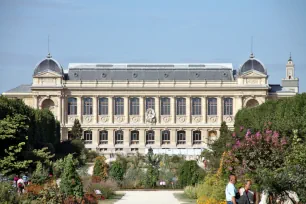
In the seventeenth and eighteenth centuries the Jardin des Plantes was not just a medicinal garden but also a site of research and education about natural species. In 1793, during the French Revolution, it became a proper museum which quickly expanded into fields such as zoology, paleontology, mineralogy, chemistry, botany and the anatomy of species.
Many of those collections have been spun off and are now housed separately, in premises situated on the Jardin des Plantes. Other collections, such as those of the Musée de l’Homme (a museum of anthropology) and the Marinarium de Concarneau (a marine biology museum), have moved to different locations.
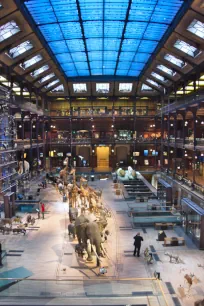

The Museum Galleries
The centerpiece of the Natural History Museum is the Grande Galerie de l’Évolution, which opened in 1994 as the successor of the Zoology Museum. This museum, which was founded in 1889, displayed a collection of mounted animals until it was closed in 1965.
After a decade long renovation, the museum finally reopened as the Grande Galerie de l’Évolution, a museum themed around the evolution of species. Its collection of mounted animals is no longer protected by glass cases, but displayed in the open. A movie director was even hired to stage the displays as dramatic as possible.
On the ground floor, which revolves around the marine world, visitors are welcomed by two huge whale skeletons. You can see animal species that live underwater as well as animals that live near the water such as birds and polar bears. The first floor is dedicated to the large mammals. The highlight here is the procession of animals from the Savannah, led by an African elephant. The second floor focuses on the interaction between humans and other species. Interesting here is the large room full of extinct and endangered species. Finally, the top floor explains the diversity and evolution of life and introduces visitors to the study of genetics.
The same building is also home to the separate ‘Galerie des Enfants’, a museum dedicated to educating children about the environment and biodiversity.
Galeries d’Anatomie comparée et de Paléontologie
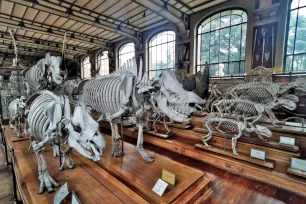
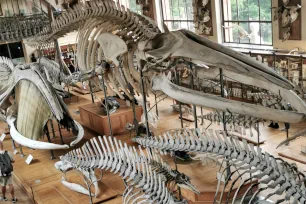
The Galeries d’Anatomie comparée et de Paléontologie (paleontology and comparative anatomy) are housed in a building in the southeast corner of the Jardin des Plantes. The collection of this department of the natural history museum is a lot more fascinating than its long name might suggest.
The galleries of this museum are crammed with hundreds of animal skeletons, from small mammals to huge dinosaurs. You can compare the skeletons of different animal types, or stand in awe of the sheer size of a fin whale. There are also many skeletons of extinct species, such as mammoths or a sarcosuchus, a superlative version of today’s crocodile.
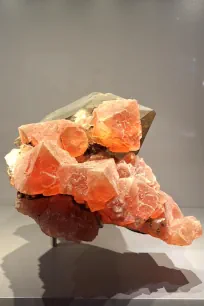
Galerie de Minéralogie et de Géologie
An almost 200-meter-long gallery near the main building of the natural history museum houses a selection from the more than 750,000 specimens that are displayed here. There are minerals, rocks, gems and even meteorites that create a magnificent display of spectacular colors and shapes. The museum’s history goes back to the seventeenth century, when the first crystals were collected for pharmaceutical purposes.
Galerie de Botanique
Between the mineralogy gallery and paleontology gallery is the botanical gallery, a museum dedicated to the world of plants. The largest object on display – from its collection of about eight million – is a slice of a sequoia tree, which measures 2.7 meters in diameter. The museum highlights the industrial use of plants in areas such as pharmacy and chemistry.
- Next: Fontaine des Innocents
- More Paris Museums
- More Sights & Attractions in Paris

